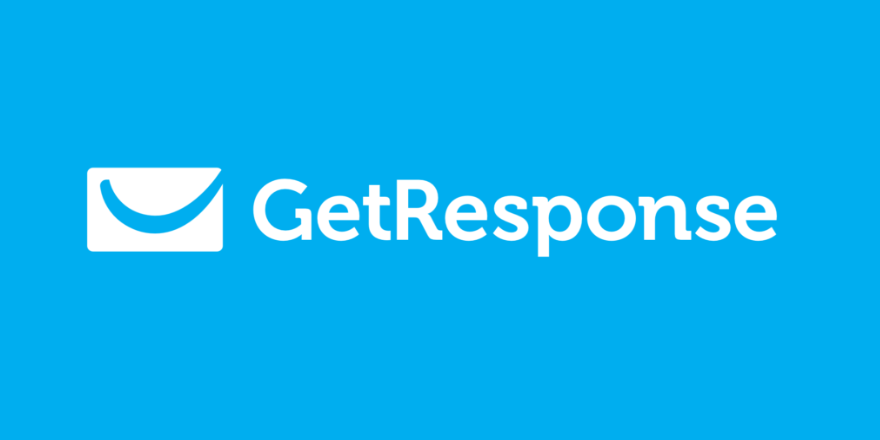Email Marketing Automation

What Is Email Marketing Automation and Why Does It Matter?
Have you ever wondered how businesses send personalized emails to thousands of customers without spending hours crafting each one? Email marketing automation is the answer. It’s a strategy that uses software to automate repetitive email tasks, delivering targeted messages to subscribers based on their actions, preferences, or specific triggers. By leveraging tools like GetResponse, businesses can streamline their marketing efforts, save time, and boost engagement. Automation allows you to nurture leads, recover abandoned carts, and build lasting customer relationships with minimal manual effort.
Why is this important? In today’s fast-paced digital world, consumers expect timely, relevant communication. According to a 2021 study by the Data & Marketing Association, email marketing delivers an average return on investment (ROI) of 38:1, meaning every dollar spent can yield significant returns. Automation enhances this by ensuring emails reach the right person at the right time, increasing open rates and conversions. GetResponse, a leading email marketing platform, simplifies this process with intuitive tools and AI-driven features.
How Does GetResponse Make Email Marketing Automation Accessible?
Are you looking for a platform that simplifies email automation without requiring technical expertise? GetResponse stands out as an all-in-one solution, offering a user-friendly interface and robust automation features suitable for businesses of all sizes. Since its inception in 1998, GetResponse has grown from a simple autoresponder tool to a comprehensive platform with over 400,000 customers worldwide. It integrates email marketing, automation, landing pages, and webinars, making it a versatile choice for marketers.
What makes GetResponse accessible? Its drag-and-drop workflow builder allows you to create complex automation sequences without coding knowledge. You can set up triggers based on user actions, such as signing up for a newsletter or abandoning a cart, ensuring timely and relevant communication. Additionally, GetResponse offers over 190 customizable templates, A/B testing tools, and AI-powered features like email generators and product recommendations, enabling even beginners to craft professional campaigns.
What Are the Key Features of GetResponse’s Automation Tools?
Curious about what specific tools GetResponse offers to automate your email marketing? Let’s explore some of its standout features:
- Autoresponders: Ever wondered how to welcome new subscribers automatically? GetResponse’s autoresponders send pre-scheduled emails based on specific triggers, such as a signup or purchase. You can set delivery times and analyze performance to optimize engagement.
- Workflow Builder: Want to create a personalized customer journey? The visual drag-and-drop builder lets you design workflows that respond to user actions, like sending follow-up emails to cart abandoners or recommending products based on purchase history.
- AI-Powered Tools: How can AI enhance your emails? GetResponse’s AI email generator, powered by OpenAI, creates optimized email content based on keywords, industry, and audience, saving time and boosting open rates.
- Segmentation and Personalization: Looking to target specific audience groups? GetResponse allows you to segment your list based on behavior, preferences, or custom fields, delivering personalized emails that resonate with subscribers.
- Perfect Timing and Time Travel: When is the best time to send emails? GetResponse’s Perfect Timing and Time Travel tools analyze subscriber behavior and time zones to send emails at optimal times, maximizing open rates.
These features work together to create a seamless automation experience, helping you engage customers effectively while minimizing manual work.
How Can You Set Up an Email Automation Campaign with GetResponse?
Ready to launch your first automated campaign? Setting up an email automation campaign with GetResponse is straightforward, even for beginners. Here’s a step-by-step guide:
- Create an Account: Wondering how to get started? Sign up for a GetResponse account by entering your email and company details. The platform offers a 30-day free trial with access to premium features, no credit card required.
- Build Your List: How do you gather subscribers? Use GetResponse’s pop-up forms, landing pages, or integrations to collect email addresses. Ensure subscribers consent to receive emails to comply with regulations like GDPR.
- Design Your Emails: Want professional-looking emails without design skills? Choose from over 500 templates or use the drag-and-drop editor to create responsive emails. The AI email generator can also craft content based on your input.
- Set Up Automation Workflows: Curious about automating your emails? Use the workflow builder to create sequences triggered by actions like signups, purchases, or website visits. For example, set up a welcome series for new subscribers or an abandoned cart email to recover lost sales.
- Test and Optimize: How do you ensure your campaign performs well? Use GetResponse’s A/B testing tools to experiment with subject lines, content, or send times. Analyze metrics like open rates and click-through rates to refine your strategy.
By following these steps, you can create automated campaigns that engage your audience and drive conversions with minimal effort.
Why Is Segmentation Critical for Effective Email Automation?
Have you considered how targeting specific audience segments can boost your campaign results? Segmentation is the backbone of effective email automation, allowing you to send tailored messages to different groups based on their interests, behaviors, or demographics. GetResponse makes segmentation easy by letting you create custom fields and tags to organize your contact list.
Why does segmentation matter? Personalized emails can increase engagement by up to 74%, according to industry studies. For example, you can segment your list to send product recommendations to frequent buyers or re-engagement emails to inactive subscribers. GetResponse’s advanced segmentation tools let you filter contacts based on actions like website visits, purchase history, or email opens, ensuring your messages are relevant and effective.

How Does GetResponse Support Ecommerce Businesses with Automation?
Are you an ecommerce business owner looking to recover lost sales? GetResponse offers powerful automation tools tailored for ecommerce, helping you turn leads into loyal customers. Key features include:
- Abandoned Cart Emails: Ever wondered how to recapture customers who leave without buying? GetResponse’s automated abandoned cart emails remind users of their unpurchased items, displaying cart contents to encourage completion. These emails can significantly reduce cart abandonment rates.
- Product Recommendations: Want to upsell or cross-sell effectively? GetResponse’s AI-driven product recommendations analyze purchase history to suggest relevant products, increasing sales opportunities.
- Ecommerce Integrations: How can you sync your store with GetResponse? The platform integrates seamlessly with platforms like Shopify and WooCommerce, importing product and contact data for targeted campaigns.
For example, London Store, an ecommerce clothing brand, saw an 86% increase in email revenue after implementing GetResponse’s automation workflows, demonstrating the platform’s impact on sales.
What Are the Benefits of Using GetResponse for Email Automation?
Why choose GetResponse over other platforms? Here are some key benefits that make it a top choice for email marketing automation:
- Time Savings: Tired of manually sending emails? Automation handles repetitive tasks, freeing you to focus on strategy and content creation.
- High Deliverability: Worried about emails landing in spam folders? GetResponse boasts a 99% deliverability rate, ensuring your messages reach subscribers’ inboxes.
- Scalability: Need a solution that grows with your business? GetResponse offers plans from free to enterprise-level, catering to startups and large companies alike.
- Comprehensive Analytics: How do you measure campaign success? GetResponse’s analytics track opens, clicks, and conversions, providing actionable insights to optimize performance.
- Multi-Channel Support: Want to engage customers across platforms? GetResponse supports email, SMS, webinars, and web push notifications, creating a cohesive marketing strategy.
These benefits make GetResponse a versatile tool for businesses aiming to maximize their email marketing ROI.
What Are the Limitations of GetResponse’s Automation Features?
Is GetResponse perfect for everyone? While it’s a powerful platform, there are some limitations to consider:
- Free Plan Restrictions: Curious about the free plan? It supports up to 500 contacts and 2,500 email sends per month, which may be limiting for growing businesses.
- Advanced Features on Higher Tiers: Want access to AI product recommendations or webinars? These are locked behind higher-tier plans like Creator or Enterprise, which may be costly for small businesses.
- Learning Curve for Advanced Workflows: New to automation? While the interface is user-friendly, creating complex workflows may require time to master.
Despite these limitations, GetResponse’s robust feature set and competitive pricing make it a strong contender for most businesses.
How Does GetResponse Compare to Other Email Marketing Platforms?
Wondering how GetResponse stacks up against competitors like Mailchimp, ActiveCampaign, or Brevo? Here’s a quick comparison:
- Mailchimp: Known for its simplicity, Mailchimp offers basic automation but lacks GetResponse’s advanced features like webinars and conversion funnels. GetResponse is often more affordable for similar features.
- ActiveCampaign: Excels in advanced automation and CRM integration but can be more complex and expensive. GetResponse offers a simpler interface for beginners.
- Brevo: A budget-friendly option with a generous free plan (300 emails/day), but it has lower deliverability rates compared to GetResponse’s 99%.
GetResponse’s combination of automation, ecommerce tools, and competitive pricing makes it a compelling choice for small to medium-sized businesses.
How Can You Maximize ROI with GetResponse’s Automation Tools?
Looking to get the most out of your email marketing investment? Here are some strategies to maximize ROI using GetResponse:
- Leverage A/B Testing: Want to know what resonates with your audience? Test different subject lines, content, or send times to identify high-performing variations.
- Use Dynamic Content: How can you make emails more engaging? Incorporate dynamic content like personalized product recommendations or subscriber names to boost click-through rates.
- Optimize Send Times: When should you send emails? Use Perfect Timing and Time Travel to deliver emails when subscribers are most likely to engage.
- Integrate with Other Tools: Need a seamless marketing stack? Connect GetResponse with CRM systems, ecommerce platforms, or social media tools to streamline data and enhance campaigns.
- Analyze and Iterate: How do you improve over time? Regularly review analytics to identify trends, refine workflows, and focus on high-performing strategies.
By implementing these tactics, businesses like XYZ Company have seen up to 30% increases in open rates, proving the effectiveness of GetResponse’s tools.
What Are the Pricing Options for GetResponse?
Concerned about costs? GetResponse offers flexible pricing plans to suit different needs:
- Free Plan: Ideal for beginners, it includes 500 contacts, 2,500 email sends/month, and basic features like email marketing and a website builder.
- Starter ($13.30/month): Supports unlimited emails for up to 1,000 contacts, one automation workflow, and ecommerce integrations.
- Marketer ($59/month): Offers unlimited automation, landing pages, and up to five users, perfect for growing businesses.
- Creator ($69/month): Includes webinars, online courses, and premium features for content creators.
- Enterprise (Custom Pricing): Tailored for large businesses with advanced needs, including dedicated support and flexible sending options.
A 30-day free trial lets you test premium features, and a 50% discount is available for NGOs, making GetResponse accessible to various organizations.
How Does GetResponse Ensure Data Security and Compliance?
Worried about data privacy? GetResponse prioritizes security and compliance, ensuring your campaigns meet legal standards. It’s GDPR-compliant, allowing you to collect and manage subscriber data responsibly. The platform uses secure servers and offers tools to manage consent, ensuring subscribers opt-in willingly. Additionally, GetResponse’s 99% deliverability rate is supported by relationships with major mailbox providers, reducing the risk of emails landing in spam folders.
For enterprise users, GetResponse MAX provides dedicated IP addresses and advanced security features, making it suitable for businesses with strict data requirements.

Why Should You Choose GetResponse for Email Marketing Automation?
Still unsure if GetResponse is right for you? Its combination of ease of use, powerful automation, and comprehensive features makes it a top choice for businesses looking to scale their email marketing efforts. Whether you’re a small business owner, content creator, or enterprise marketer, GetResponse offers tools to automate, personalize, and optimize your campaigns. With a proven track record—evidenced by clients like Allakando and Red Hot Marketing achieving significant growth—GetResponse is a reliable partner for driving results.
Ready to get started? Sign up for GetResponse’s 30-day free trial and explore how automation can transform your email marketing strategy. Visit getresponse.com to learn more.
You may also be interested in How to Do Email Marketing: A Step-by-Step Guide



